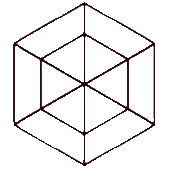1665 words
Parent: T.00_ED_TEXTUAL HOLOGRAM: PRESENTATION
NEXUS
Source: Elie During, “Art, Science, and the Nexus”, in The Art of the Real: Visual Studies and New Materialisms, R. Rothman & I. Verstegen (eds.), Newcastle, Cambridge Scholars Press, 2015.
Wilfrid Sellars’s definition of the general aim of philosophy nicely captures what one would more particularly expect from metaphysics: “[T]o understand how things in the broadest possible sense of the term hang together in the broadest possible sense of the term”. Metaphysics is ultimately about that: the connection and coexistence of things. In other words, the nexus of things. Space and time (or “space-time,” the term popularized by contemporary physics) constitute its canonical forms, though they are probably not the only ones, and space-time itself—the joining of space and time, considered in both their logical and sensible dimensions—admits of a great many varieties.
Consider the following example: a video by the Austrian performance artist known as VALIE EXPORT, entitled Adjungierte Dislokationen (1973). The piece takes the form of a triple projection. Three separate sequences of images are juxtaposed in the space of a large rectangle: on the right, two superimposed 8mm projections; on the left, a single projection equal in height to the ones on the right, in 16mm. The large image reveals the organizing principle of the performance. The artist has strapped two cameras to her body, which functions as a mobile tripod: the first camera looks out straight ahead, from the level of her collarbone; the second is placed in the middle of her back, pointing in the opposite direction. These are the two 8mm cameras whose footage is projected on the right side of the screen. At first, VALIE EXPORT walks about in an anonymous urban environment: a city square, streets, the courtyard of a building; then through more bucolic surroundings, climbing the slope of a low hill, crossing a field, and so on. The film lasts eight minutes, amidst the roar of three projectors operating simultaneously.
The title of the work speaks of “adjoint” or “conjoined” dislocations. But what exactly has been dislocated? And what could it mean to try to join together dislocations? One has only to watch the video, and to perform the task of split (or distributed) attention that it demands of the viewer, in order to see that the simultaneity one naturally expects to obtain between these three images is broken, dislocated in a thousand ways. First of all, the small image at the top right is not synchronized with the one below it; nor do the two images taken together seem to correspond in any systematic fashion to the large image on the left. The sense of dislocation becomes more pronounced as the film goes on. Apart from two or three moments of apparent coincidence or symmetry, there is no way whatsoever to reconstruct, on the basis of these queerly conjoined segments, anything like the sort of coherent sequence shot one might otherwise expect to obtain by combining the two small images and the large one to create an improbable 360° perspective. Dis-lokation in this case also signifies that any attempt to reconstitute the route traced by these images, which is to say an unfolding trajectory associated with an the sense of a duration, is hindered at each instant, so that the form of space itself, and indeed the very sense of a continuous movement, ends up being hopelessly blurred. Instead one is left with a rhapsodic succession of increasingly abstract shots, punctuated by episodic synchronizations and occasional points of reconnection.
If cinema is the art of editing and assembling separate takes in order to confer an overall sense of action or movement to projected images, then VALIE EXPORT’s piece plainly amounts to taking the usual rules of the game and pushing them to their limit. But perhaps the most surprising thing about this disrupted montage is not so much the discrepancy or deliberate dislocation of the 8mm shots in respect of each other as the relationship that they both enjoy with the larger image to their left. This larger view, one soon deduces, is filmed by a third camera that never appears in any of the 8mm shots. In principle, then, it should reveal to us the truth of the artistic exercise, and indeed it does do this to the extent that it shows us how the performance was carried out, while showing us at the same time, from an encompassing vantage point that seems somehow to be exempt from the play of shifting perspectives, the mobile site from which the smaller projections look out upon the world in opposite directions. To conjoin forward- and backward-looking perspectives whose lines of sight never intersect, and then to place next to them a projection that flattens them, so to speak, by aligning them on the same plane, namely, the wall of a gallery—this is a splendid idea, and by no means a simple one. But to relate the progressive dislocation of the two smaller perspectives to a witness-image, a central perspective that in reality witnesses nothing at all, apart from the bare event of the performance itself, is to plunge the whole exercise back into a state of complete indeterminacy with regard to space-time coordinates.
Another case in point is the assemblage or subtle editing of almost imperceptible durations and flows in some of Mark Lewis’ video works. Downtown: Tilt, Zoom and Pan (2005) is an emblematic piece: shot in the periphery of downtown Toronto, it relies on three basic camera moves that together manage to display heterogeneous regions of space—similar to the multifarious animal worlds described by von Uexküll—, at once insulated from each other and oddly juxtaposed in the overall composition of the film. The question is: how can the local durations animating these disparate Umwelten be totalized, or at least brought together in a single plane of consistency? No overall embedding space is available to host these fragmented threads. The only way to go is to actually try to stitch together these disjointed neighborhoods, connecting them one at a time as the film unfolds. This is exactly what the film achieves within the scope of its 4:28 minutes, albeit in an ambiguous manner. Constructed out of two different but seamlessly joined shots, it alternates sweeping camera moves and seemingly frozen frames exhibiting a variety of space-times, some of them folded or nested within each other—see the insect finding his way around a red plastic cup by a muddy patch filmed in close-up framing—others merely juxtaposed in a disconnected fashion—a swamp, a warehouse space and a parking lot against the remote skyline, a railway track… To which one should add the variety of movements occurring within the frames in these successive settings: the insect’s erratic moves, a car maneuvering in reverse motion, shrouded by a strangely suspended cloud of dust, the smooth and slightly unreal translatory motion of a merchandise train, etc. These interlocking or merely contiguous spheres of existence involve incommensurable scales and motions; they differ in content and overall tonality, sometimes like night and day, dusk and morning. From the scale relations between the successive settings, one may infer the deployment of a foreground, middle ground and background, yet this does not really help making sense of the hybrid, disunified space that is both the pretext and the result of Mark Lewis’ cinematic composition. That the film is in fact shown in reverse is almost imperceptible, but it certainly fuels the overall sense of uncertainty that pervades this highly contrived composition. And since no all-embracing, embedding space or “landscape” is readily available to host the heterogeneous durations unfolding in these different milieus, connections can only happen in piecemeal fashion by moving—like insects or butterflies—across overlapping and yet seemingly disconnected neighborhoods.
The use of the pan shot brings to mind what Kracauer had to say about “cross-section” films such as Walter Ruttmann’s 1927 symphonic depiction of Berlin, the Großstadt, except that in the case of Lewis’ Downtown the City has almost totally vanished as a unifying element, surviving only as a pictorial, photographic and even postcard-like reminiscence in the form of a cityscape placed in the background of the central “tableau”. The question this raises is ecological and even cosmological in nature. It can be roughly put this way: in the absence of a ready-made embedding space—call it “nature” or “urban space”—in what sense do these local durations belong to the same world? How can they be totalized, if not by connecting them one at a time? And what does it take to connect them, besides the camera moves (“pan, tilt and zoom”) and the natural montage effect obtained by sweeping across the motley scenery? How is connection achieved in the absence of any intuitive sense of continuity? The artist himself does not offer any authoritative answer to the question of how to achieve a sense of global time on such premises, but he certainly shares a common concern with Bergson who acknowledged, besides the simultaneity of two instants, and anterior to it, the simultaneity of two or more flows between which our attention “can be divided without being split up” (Bergson, Duration and Simultaneity, p. 35). Of course, the limit of Bergson’s analysis, if one wants to apply it to the cinematic experience, is that the temporal unity of the film itself cannot be entirely predicated upon the alleged unity of the spectator’s lived duration. For the latter is in turn continuously modulated by filmic duration, and framed accordingly. So the logic of distributed attention must be pitched against the generic procedures by which cinema achieves new forms of temporal unification. And this is where metaphysics strikes back. We need it in order to make explicit, and possibly to expand, the patterns of connectedness exhibited in artistic forms.
Links
︎ egs.edu/biography/elie-during ︎ parisnanterre.fr/m-elie-during--697698.kjsp
From the same writer
T.00_ED_TEXTUAL HOLOGRAM: PRESENTATION T.01_ED_FOLDS AND PIXELS T.02_ED_DIGITAL SUBLIME T.03_ED_MATHEMATICAL SUBLIME T.04_ED_IMMANENT SUBLIME T.05_ED_NEXUS T.06_ED_KINKED CLASSICISM T.07_ED_LOOSE COEXISTENCE T.08_ED_FLOATING TIME T.09_ED_FLOATING SPACE T.10_ED_RETRO-FUTURES T.11_ED_EXITING VIRTUAL REALITY T.12_ED_BULLET TIME T.13_ED_GHOST TIME T.14_ED_SUBLIMINAL TIME T.15_ED_DIAGRAMS OF COEXISTENCE T.16_ED_VOLUME-IMAGE T.17_ED_VERTICAL TIME T.18_ED_TURNING MOVEMENTS T.19_ED_SUPERTIME T.20_ED_PROTOTYPE T.21_ED_ZERO-G ARCHITECTURE T.22_ED_SHOCK SPACE T.23_ED_TRANSPARENCY






